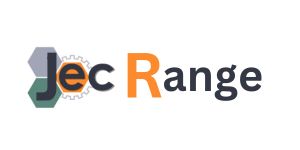Social Media and Customer Engagement

The Social Feedback Cycle
For a lot of organizations including businesses, nonprofits, and governmental agencies use of social media very often begins in Marketing, public communications, or a similar office or department with a direct connection to customers and stakeholders. This makes sense given that a typical driver for getting involved with social media is a slew of negative comments, a need for virality or a boost to overall awareness in the marketplace and especially in the minds and hearts of those customers increasingly out of reach of interruptive (aka traditional) media. In a word, many organizations are looking for engagement, and they see social media as the way to get it.
The advent of Web 2.0 and the Social Web is clearly a game-changer, on numerous fronts. Given the rush to implement, and the opening focus on marketing specifically versus the business more holistically, many social media projects end up being treated more like traditional marketing campaigns than the truly revolutionary ways in which a savvy business can now connect with and prosper through collaborative association with its customers. As a result, the very objective engagement, redefined in a larger social context is missed as too many social media campaigns” run their course and then fizzle out.
Whether that’s right or wrong is another matter, and the truth is that a lot of great ideas have given rise to innovative, effective, and measurable social business programs. But these are still the exceptions, which is unfortunate as social technology is within the reach of nearly everyone. The collaborative technologies that now define contemporary marketplaces technologies commonly called social media, the Social Web, or Web 2.0 offer a viable approach to driving changes in deeper business processes across a wide range of applications.
Open Access to Information
The Social Feedback Cycle is important to understand because it forms the basis of social business. What the social feedback loop really represents is the way in which Internet-based publishing and social technology have connected people around business or business-like activities. This new social connectivity applies between a business and its customers (B2C), between other businesses (B2B), between customers themselves, as is the case in support communities and similar social applications, and just as well between employees.
Social Business Is Holistic
When you combine identity, ease of publishing, and the penchant to publish and to use shared information in purchase-related decision-making processes, the larger role of the Social Feedback Cycle and the practice of social business emerges: Larger than the loop that connects sales with marketing one of the areas considered as part of traditional Customer Relationship Management (CRM) the Social Feedback Cycle literally wraps the entire business.
The Connected Customer
The upshot is that the customer is now in a primary role as an innovator, as a source of forward-pointing information around taste and preference, and as such is potentially the basis for competitive advantage. I say potentially because customers having opinions or ideas and actually getting useful information from them and then using it are two different things. Here again, social business and the related technologies step in: Where social media marketing very often stops at the listening stage, perhaps also responding to directly raised issues in the process, social business takes two added steps.





